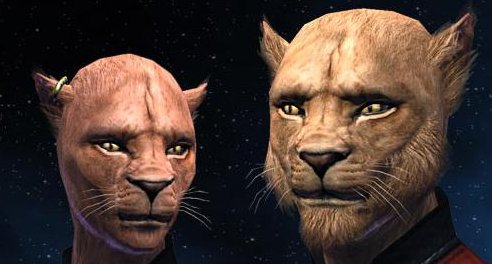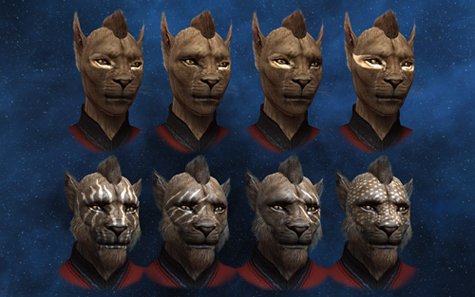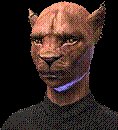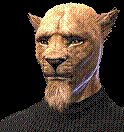
Sources:
The Slaver Weapon by Larry Niven - Star Trek: The Animated Series.
The Man-Kzin Wars by Larry Niven.
The Ringworld Engineers by Larry Niven.
Ringworld by Larry Niven.
The Great Moghuls by Bamber Gascoigne.
Lives of the Indian Princes by Charles Allen & Sharada Dwivedi.
Partition by Barney White-Spumer.
Cat Sense by John Bradshaw.
Feline Behaviour and Welfare by Andrew F. Fraser.
Himmler's Crusade by Christopher Hale.
Why I'm No Longer Talking to White People About Race by Reni Eddo-Lodge.
Me and White Supremacy by Layla F Saad.
How to be an Anti-Racist by Ibram X. Kendi.
Staying Power: The History of Black People in Britain by Peter Fryer.
Biracial Britain by Remi Adekoya.
Natives: Race and Class in the ruins of Empire by Akala.
In Black and White by Alexandra Wilson.
Black British Problems by Marceline Powell.
Black and British: A Forgotten History by David Olusoga.
The Science of Hate by Matthew Williams.
Irish Freedom by Richard English.
The Troubles by Tim Pat Coogan.
Making Sense of The Troubles by David McKittrick and David McVea.
Silencing the Past by Michel-Rolph Trouillot.
Israel and Palestine: The Complete History by Ian Carroll.
Chimera by Stephen Gallagher.
The Nightmare Man by David Wiltshire.
The Holocaust by Laurence Rees.
Tribes by David Lammy.
A Cultural History of Tibet by David Snellgrove and Hugh Richardson.
China's Forgotten People: Xinjiang, Terror and the Chinese State by Nick Holdstock.
The Tree that Bleeds: A Uighur Town on the Edge by Nick Holdstock.
 Caitian Nation.
Caitian Nation.
Cait. This is a recreation of Kzin of thousands of years ago, before the dark times, before the Kzinti. Palaces, gardens, monuments and museums all recreated on a world as close to Kzin in climate and geography as possible. Relics saved in the exodus helped to recreate the old ways. Old traditions and language reappeared as the Caitians reclaimed their future with the entire United Federation of Planets between them and their mortal enemies.
From M’ress biography: The Caitians and the war-like Kzinti share common roots in the deep past -- as do Vulcans and Romulans. As with the Vulcans and Romulans, the two groups went their separate ways to develop as two entirely different civilizations. The Caitians are fierce warriors when so called upon, but pride themselves on their accomplishments in arts and philosophy rather than on the martial arts. Their family units are extremely close. M'Ress's other three litter mates also serve in Starfleet in various capacities. The long line of her ancestors is well known on Cait, and her parents are honoured citizens.
From Memory Beta: The Caitian language consists of multiple soft tones, spoken with a deep, purring resonance; this style of communication makes it difficult for many Caitians to adapt to phonetic languages. Caitians have excellent hearing, with a frequency range far beyond that heard by normal humanoids. Many Caitians who enter Starfleet train in communications and linguistics as a result of this
Female Caitians have thinner faces and one or more earrings. These symbolise family lineage (rather like the Bajoran religious earring designs) and the importance of the female in continuing the pride/family line. Male Caitians can often be seen with goatees or manes depicting their gender.
Caitians are “small and sinewy; the females are as delicately dainty as the Siamese or Abyssinian cats of old Earth” and as for their culture they “pride themselves on their accomplishments in arts and philosophy”. Clan/pack/family ties are strong in Caitian society – as in Kzinti cultures as well. The long line of ancestors is well known on Cait. Caitians have a variation of markings on the fur and face that can identify different prides.
Recent developments within Caitian society concern the issue of the Kzintis and whether a dialogue could be opened to talk to them. With a Caitian as President of the Federation, the Caitian people have never had a louder voice in the Federation Council to make their needs and wants known. President Sh’ghee has already had a four-year term in office.
Prior to the election of Sh’ghee as President in the early months of 2308, a number of attacks took place both in Caitian space and on Cait itself. Investigations by the Federation Police Service blamed Caitian separatists who have an agenda to reunify the Caitian nation with their known cousins in the Beta Quadrant. This once-shunned political viewpoint had gained strength over the decades as disaffection with endless conflicts made people turn towards blood over politics.
Federation Security investigated allegations that Kzinti were involved in the attacks, which would be a contravention of the Treaty of Sirius, but the evidence was non-conclusive.
Art-lovers were congregating on Cait in 2310 for an auction of a rare painting by M’grrouw, the famous Caitian artist. The painting, Dawn over the Abyssinian Plains, fetched a record price. The new owners, whose identity is a closely-guarded secret, have pledged to display the art in the National Museum of Art in the Caitian Capital city.
One of the themes of the Interim Years is about the Caitian/Kzinti nation and the journey ALL of these feline relations will take in finding their destiny. For the Kzinti there is the opportunity to ally with the Klingons in order to be freed from the Treaty of Sirius. Their genetic knowledge has enhanced them beyond Caitian abilities. The Caitians escaped from the experiments their Kzinti cousins were conducting 800 years ago. The Korlivilar are an offshoot from the Caitian baseline, perhaps with some ISC tinkering. They have to contend with being blamed in part for the failure of the Pacification War and to find themselves a place in the future of the ISC.
KRADs novel Singular Destiny speaks of the Caitians having left and returned to the Federation at least once before. This may be some political development with the Caitians deciding to rejoin their genetic brothers. With the Kzinti affiliated to the Klingon Empire, it may be the case that the Caitians want to reunify.
 Cait
Cait
The Caitian system consists of two planets and an asteroid belt. Cait, the second planet in the system, has two moons Rea and Sura. The asteroid belt lies further out from unformed planets and is a rich source of minerals; the Federation dilithium crystals for this region come from the orbital mining facilities here. Cait has M-class gravity and atmosphere and a rich ecosystem of plains and jungles.
The rich biosphere on Cait has provided medical advancements and is in itself a wonder of the Alpha Quadrant. Biochemistry at the University of Cait is arguably at the leading edge of the Federation. Starfleet Medical has a large facility on Cait to investigate possible medicinal uses of the flora on the planet.
Cait has a starbase facility and orbital fleet yard which specialises in TacFleet assets. The new Federation fighter craft and fleet carrier technology eminates from the yards of Cait. With the new pivot by Starfleet towards the Alpha Quadrant, Cait has now been placed onto the frontline of exploration.
Admiral Irina Khmelnova, the Starfleet Commander, has ordered the allocation of the principal elements of the Starfleet to Cait for pioneering missions into the Alpha Quadrant. Captain Demora Sulu has taken the Enterprise-B to Cait before heading spinward.
Kzin, the origins of the Caitians and their diaspora.
Kzin: like a mixture of old India and Tibet; an ancient world whos civilisation has existed for thousands of years. Temples, museums and palaces dot the planet, as well as vast cities that reflect the wealth and status of this old civilisation. What you see on the surface, however, doesn;t reflect the actual, violent, divisive history of this world. The statues, monuments and public spaces very much reflect the dominant species of this planet: Kzinti. It doesn't, however, make any mention of the second species also born here: Caitians.
The plains that gave birth to the Kzinti species, were the one and the same that created the Caitians. Thousands of years ago, Kzinti and Caitians were the same species, dominating these plains just as the big cats once ruled the African plains on Earth. Unlike on Earth, the Kzinti/Caitians are the ones who evolved intelligence, to become the dominant species on the planet. All other species on Kzin fell before them as prey. For thousands of years, these subspecies lived together harmoniously, looking identical to the Caitian species of modern times, with a few variations. Change came in their equivalent of the 20th Century technological development. Medical science and genetic became known to them. Suddenly the different subspecies became classified in science as seperate. What had occasionally been seen as behavioural differences became racial diversity. In the case of the Kzinti, justification to place themselves as the superior race, and Caitians the lesser species.
It started as social and racial slurs in the streets. Caitians were treated as the source of weakness, disease and fake news poured petrol onto the fire. Race riots broke out; Caitians were demonstrocised as criminals or worse. In addition, Kzinti medical science was seeking to 'purify' the Kzinti genome; they sought the mythical progenitor species that had evolved into the Kzinti and not the weakling Caitians. Fang and claw size as well as musculature and intelligence were factured in. Kzinti aspired to be the Uber-race of the planet. Genetic manipulation and bioledical research the way of 'recreating' the mythical progenitor species. Kzinti began to differentiate from their Caitian kin. The once-subtle differences manifested more clearly as the Kzinti fangs enlarged, their height increased and their intlligence followed. Whilst the Caitian's poor diet and schooling stagnated their species, the Kzinti medical and superior schooling led to stronger and smarter Kzinti that dominated their weaker brethren. The Caitians were moved into ghettos, seperated as 'unclean' from the Kzinti society. Transport was kept seperate, with Caitians expected to do the menial work. As with the Augments in 1990s Earth, the Kzinti enhancements bred superior ambition. Kzinti culture was 'cleansed' of Caitian influence: statues, art, literature, Caitian foods, language and fashion were all cancelled and erased from books, movies, memory and thoughts.
It was once deep space flight had been developed that the Caitians made their move. The Caitians fled Kzin in an exodus born of centuries of abuse and subjugation by the Kzinti. The Caitian diaspora took as many Caitians as possible, before the Kzinti overran and imprisoned those that were left behind. In the end, thousands of Caitians fled Kzin forever, leaving behind millions to face death marches, hunted for sport or enslaved as servants to the now all-dominant Kzinti people. The Patriarchy, that had once had both Kzinti and Caitian members, now had an all-Kzinti composition. The palaces were the domain of the dominant prides. Caitians remained the unseen, unclean servants who slaved to clean and maintain the palaces and factories on pain of death. A Caitian life on Kzin was now worthless. Kzinti expanded their culture and species beyond the homeworld of Kzin. Caitian exiles who had only reached these nearby worlds were soon enslaved or slaughtered. The history books would dent those Caitians had ever been there. The Kzinti established classes within their own species and homed each class accordingly. Kzin (especially the first city) was reserved for the highest tier Kzinti. The space around the Patriarchy was claimed as the hunting grounds and sovereign territory. Nearby worlds of Delta IV and Aamazzara were raided by the Kzinti for sport and resources.
From M’ress profile:
Cait is a planet in the Lynx constellation. There is only one other planet in the system, and it is uninhabited. The atmosphere, mass and gravity of Cait are all near Earth normal.
From Memory Beta:
Cait is the second planet of twelve orbiting a medium-sized yellow star. It is the only habitable planet in its system and has two moons, Rea and Sura.The asteroid belt that lies between the fifth and sixth planets of the Caitian system is an abundant source of ores and valuable minerals, not the least of which is dilithium. Orbital refining platforms within the belt provide a large percentage of the dilithium crystals used in that area of Federation space.
Modern Caitian History
2305 – Caitian archaeologists claim to have found another sleeper ship from the Diaspora of 800 years ago. The wreck, thought to be of the lost G’rawl, was found deep within the asteroid field in the outer Caitian system. The wreck was deep within a chasm that, along with the mineralogical composition of the asteroid, hid the ship from sensors.
2307 – Senator Sh’ghee of Cait is nominated for the elections for Presidency of the United Federation of Planets. Sh’ghee promises a harder line against the Romulan aggression and to reform the UFP and Starfleet ready for the new Century, chastising the current President for being ineffective at reforms.
2308 - Attacks within Caitian space are blamed on Kzinti sympathisers, although the evidence is inconclusive. The Federation Council orders an investigation into whether this may have been a breach of the Treaty of Sirius, the findings are not definitive.
President Sh’ghee is elected as President of the UFP despite the attacks. Sh’ghee promises reform within the Federation and to address the needs of Cait and other worlds that may have been overlooked in recent times. The Venturi are keen to see Sh’ghee take action over the plight of their home world.
2311 – President Sh’ghee goes for re-election as President. Sh’ghee is up against P’laar of Vulcan and Thomas Granger of New Johannesburg colony. P’laar is seen as a pacifist candidate angling for disarmament and diplomacy following Tomed; Granger is seen as attacking Sh’ghee for broken pledges and failed programmes from his 2308 mandate. Granger promises to be more inclusinve of the colonies and move away from the “centralist Core World agendas”; this is a divisive campaign. Sh’ghee angles for the difficulties of change and that true changes require more time. Sh’ghee argues that the engagement policies with a firm response in reserve helped to dissuade the Romulans.
Senator Granger is voted down in the polls due to his negative campaigning, being seen by the voters as having nothing different from Sh’ghee’s own re-election mandate. A simulcast debate on Federation News Service and FNN has Sh’ghee demonstrating his natural debating skills and leadership presence borne of four years in the role of President. The public, weary of the recent Romulan aggression and the feeling that after every conflict Starfleet attempted to disarm only to face a new threat, does not feel the time is right for P’laar’s pacifist policy. Sh’ghee wins re-election on a narrow margin.
2312 – President Sh’ghee is sworn in as President of the UFP for a second term in Paris, Earth. He immediately orders a review of the Starfleet to ensure it is ‘Fit for Purpose’ to match current threat forces and future perceived dangers. Sh’ghee’s second administration suffers an early blow when the Klingon Empire reveals it has signed a trade agreement with the Kzinti Patriarchy. Sh’ghee had started low-level discussions as to whether to negotiate with the Kzinti about the Treaty of Sirius; the Klingon Trade Agreement renders the argument moot as the De-Militarised Zone is now put on a countdown to be abolished by 2314. Sh’ghee’s pledge to the Caitian people, to “stay in control of the Kzinti situation”, looks certain to have been dealt a mortal blow.
Senator Lyrrus R’less
R’less is the current Federation Council representative for the Caitian people. R’less took over when Aowr Sh’ghee was elected as Federation President in 2308. R’less entered politics after the people wanted someone to represent the Caitian Nation as a whole.
R’less is pro-negotiations with the Kzinti but on the terms of the Caitian people. The trade agreement between the Kzinti and the Klingon Empire is seen as an embarrassment; the President is seen as having failed to foresee the move despite having the resources of Starfleet Intelligence at his disposal.
Senator R’less has put herself at odds with the President for the spirit of the Caitian people. The election saw the Caitian vote split between support for the President and support for R’less approaching the Kzinti issue on behalf of Cait itself.
Federation President Aowr Sh’ghee
The new 2312 President of the United Federation of Planets (after Ra-ghoratreii and a Rigelian) is a Caitian. Since 2308, this president has served one term after the previous Rigelian who served 8 years after Ra-ghoratreii. The new President was sworn in 2312 and has promised to shape the Federation for the century ahead. President Sh’ghee comes from a long and distinguished line of Caitian diplomats and is the first to ascend to the Presidency of the UFP. It is said that the Caitian race has not had a sufficiently loud voice in the Federation, a detail that the new President is eager to re-dress.
Under the watch of President Sh’ghee the Kzinti have allied themselves with the Klingon Empire in a Trade Agreement. Sh’ghee knows the cultural history with the Kzinti and the Treaty of Sirius; the Kzinti Patriarchy pressed for the abolition of the Treaty, freeing this genie from the bottle in which it has been kept for decades. Back home on Cait there has been a growing movement towards discussions with the Kzinti, the sentiment being that time has passed and blood is blood. Should the Caitian nation make a move to join with the Kzinti, this could mean that the President has to step down.







 Caitian Nation.
Caitian Nation. Cait
Cait





